MR. DINKINS’ BULGING FACADE (1977)
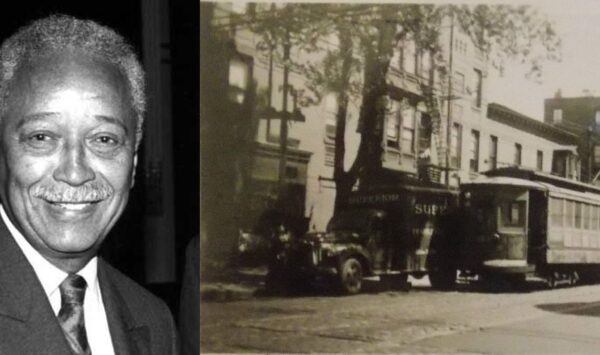
******************************************************************************************************************************** Brownstone Detectives investigates the history of our clients’ homes. The story you are about to read was composed from research conducted in the course of one of those investigations. Do you know the history of YOUR house? ******************************************************************************************************************************** Have you ever wondered what once filled those large lots at the corners of Halsey Street and Ralph Avenue? Every house has a history. You know it is there, but the clouds of the past work to obfuscate the present. Uncovering that history takes some detective work, but with a little time and some gumshoe sleuthing, the answers can be discovered. With regard to 774 Halsey Street – what do we know happened? A fire? Decay? Gas explosion? What do we know about the life of the building? What was it used for? Who owned the building and who lived there? We looked to clues from newspaper archives, fire insurance maps, and physical evidence to unravel that history. This is our report: WHAT HAPPENED to 774? A 4-story brick apartment building – 774 Halsey Street – sat on the southeast corner of the Halsey/Ralph intersection. It had a commercial space on the ground floor facing Halsey Street and one at the rear of the building at 153 Ralph Avenue. The building housed a number of apartments the addresses/entrances of which were on the Ralph side of the building at 149 Ralph Avenue. The apartments of the Ralph-facing side of the building had stacked bay windows, one on each floor. South of […]
A JUNGLE MARCHED THRU BED-STUY (1900)
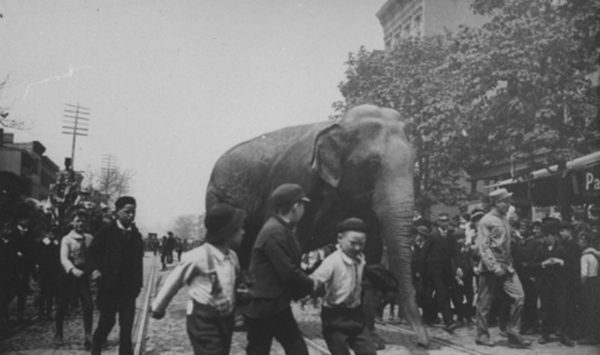
******************************************************************************************************************************** Brownstone Detectives investigates the history of our clients’ homes. The story you are about to read was composed from research conducted in the course of one of those investigations. Do you know the history of YOUR house? ******************************************************************************************************************************** The grey mastodons pounded threateningly down Howard Avenue past the gloomy darkness of Saratoga Square Park. Lumbering slowly around the corner onto Macon Street, they let forth a great trumpeting roar, swaying rhythmically to and fro. As their long, great shadows danced menacingly on the canopy of the park’s trees, cast vaguely by the faint light of the omnipresent red and green flickering colored torches, they presented a terrifying and foreign spectacle. Hundreds of small boys darted in and out of the gathering throngs to view the intimidating beasts, instilling in the air a noticeably heightened excitement which spread further and further down the block, as the presence of these creatures became known. As these majestic monsters moved towards 738 Macon Street, they let out their crushing roar which now could be felt more by the bones than by the ears. A great moan of excited joy leapt, in a synchronized response, from the lips of the visually excited crowd as each and every person lining the Macon Street parade route viewed the very first elephants. As the grey forms, dabbled in red and green light, diminished in size on their trek towards Ralph Avenue, they were replaced by the great humpbacked dromedaries with their inartful steps and studied looks of […]
GUERRILLA MARKETING IN A DRESS (1903)
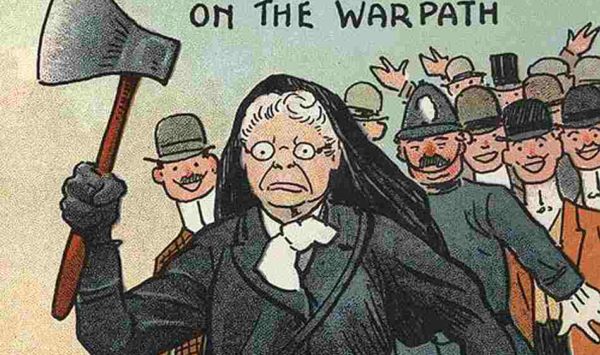
******************************************************************************************************************************** Brownstone Detectives investigates the history of our clients’ homes. The story you are about to read was composed from research conducted in the course of one of those investigations. Do you know the history of YOUR house? ******************************************************************************************************************************** When Brooklyn saloon owners saw Carrie Nation entering their Broadway establishments carrying her ax, their first thought was to protect their liquor. But when that grand and radical old figure of the Victorian temperance movement approached their bars, they were stunned at her request. “Gimme a drink – or else!” The original goal of Nation’s ax-swinging was to promote the temperance movement through the visual image of the destruction of its foe – liquor. It brought new prominence to a movement whose most visual image to date had been old women lambasting the drinking ways of men. When she started swinging that ax, though, she got attention, and so, in extension, did the temperance movement. CARRIE NATION – COMES TO BROOKLYN? But Nation, whose anti-saloon message was promoted primarily in Kansas, was a shocking sight in the Eastern District of Broadway. She had recently visited New York City, though, and so no one was willing to challenge that ax in the bars up and down the avenue – even so close to the liquor center of Brooklyn – Bushwick Avenue. “Dressed in a plush sacque, a neat fitting skirt, an old fashioned bonnet and carrying in one hand a dilapidated carpet bag and in the other a wooden ax, a person, […]
FOOLING THE UNDERTAKER, PT. II (1900)
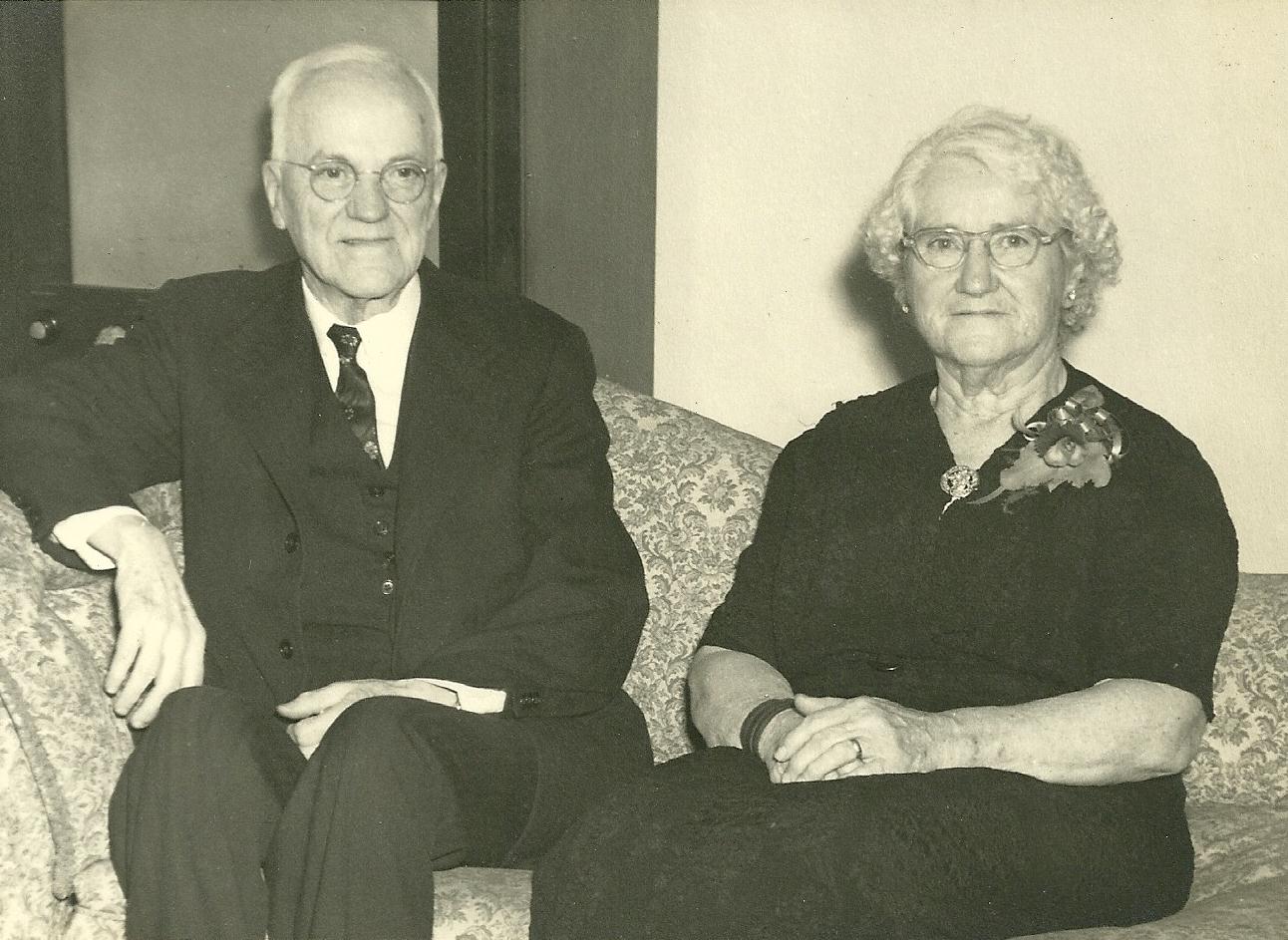
(Continued from Part I of Fooling The Undertaker) The first time that Park returned to Ralph Avenue for his Miss Twaddle, the watchful Twaddle boys were there to meet him. They refused to allow Miss Twaddle to see Park, and so he returned home both frustrated and empty-handed. Park knew he would have to find a way to outsmart the Twaddle boys. None of them was married, and so it was clear to him that they didn’t understand true love. Hardcastle, the undertaker (and Park’s former boss), was another obstacle to overcome – he, too, had never married. And while Park was sure of Hardcastle’s eagle’s eye, he was just as certain that Hardcastle’s hearing had not been cured a few years ago by Dr. Copeland’s quack patent medicine. So, when Park returned the second time in late May of 1900, he had already planned their escape, guiding Miss Twaddle’s actions and informing her where to meet him. Miss Twaddle would tiptoe down the stairwell, being exceedingly quiet. When she reached the door, she would walk in the opposite direction of Hardcastle’s parlor and down Macon Street toward Saratoga Square. On this second visit, Park was successful. Meeting up with Miss Twaddle, he spirited her away with him – and away from her life on Ralph Avenue. The two had “eloped” in grand fashion, making their way to a church far enough away from Ralph Avenue that they could marry without interference – which they did – that day. Afterwards, […]
FOOLING THE UNDERTAKER (1900)
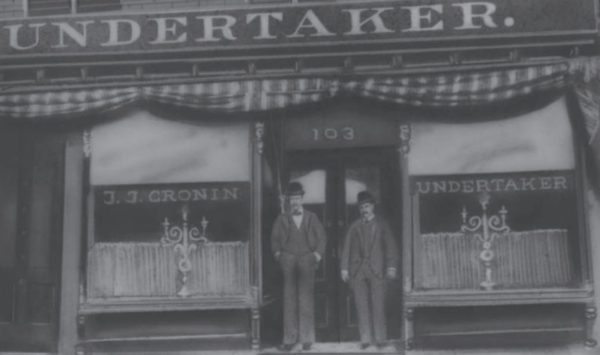
******************************************************************************************************************************** Brownstone Detectives investigates the history of our clients’ homes. The story you are about to read was composed from research conducted in the course of one of those investigations. Do you know the history of YOUR house? ******************************************************************************************************************************** Among the many thriving shops that lined busy Ralph Avenue at the turn of the century was a single story storefront at 159 Ralph Avenue. Just up from Macon Street, it stood amongst the avenue’s tailors, bakers, butchers, paper-hangers, plumbers, and pharmacies, dealing in bereavement and mourning. Hardcastle Brothers Undertakers had been in the neighborhood for almost as long as there had been a neighborhood. When a local resident died, it was usually Robert K. Hardcastle’s business to have them removed to his undertaking salon where he would prepare them for their wake and subsequent burial. Hardcastle was of Scotch-Irish descent – a bit bull-headed, very stubborn, and quite recently deaf. But he was a respected member of the community for the role he played in it, and the work he did for the families here. Hardcastle prepared and buried a good number of the people who died on Macon Street and the surrounding streets at the time. His business was steady, as people were constantly dying, so, other than a bit of advertising he did a few years ago for Dr. Copeland’s patented Hearing Treatment – he had little need to advertise his own undertaking services. It was all word-of-mouth. In 1900, though, a small piece of newspaper fluff about an employee […]
BUTCHER, BAKER, UNDERTAKER (1895)
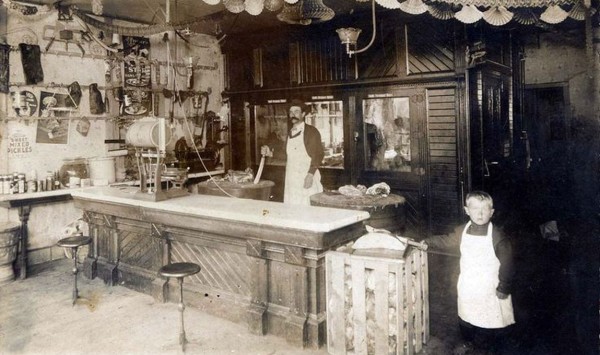
******************************************************************************************************************************** Brownstone Detectives investigates the history of our clients’ homes. The story you are about to read was composed from research conducted in the course of one of those investigations. Do you know the history of YOUR house? ********************************************************************************************************************************As the sleeping giant that is Bedford-Stuyvesant’s Ralph Avenue begins to awaken from its slumber, it is tempting to take a look back at some of the businesses that once lined this bustling thoroughfare. STUYVESANT EAST OF YORE The eastern section of Stuyvesant was alive with industry in the late part of the 19th and the early part of the 20th centuries. As houses had recently been built along the main streets, stores, schools, and churches had gone up along the avenues and on corners, dotting the landscape with their offerings. The neighborhood, after its initial build-up in the 1890s, became completely self-sufficient in terms of goods and services. Residents of Macon Street, like those from the other streets in the neighborhood, found themselves surrounded by a variety of offerings that would allow them – and their servants, in some cases – to satisfy the needs of their families easily and quickly. THE BUSTLING BUSINESS CORRIDOR THAT WAS RALPH AVENUE Starting in the late 19th century, Ralph Avenue became a busy local business corridor filled with a wide variety of shops and stores that suburban families needed to support households of consumers. Since its inception, the avenue had public transportation, in the way of horse-drawn omnibuses and then later a streetcar line, […]